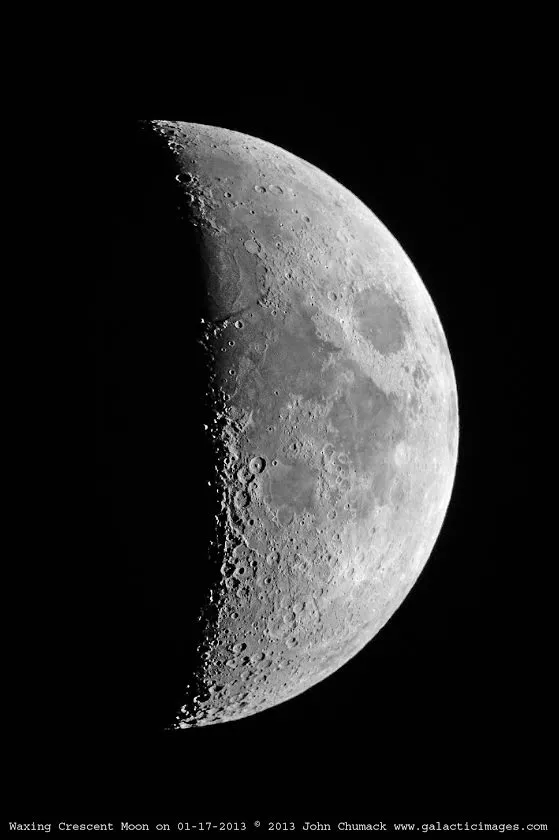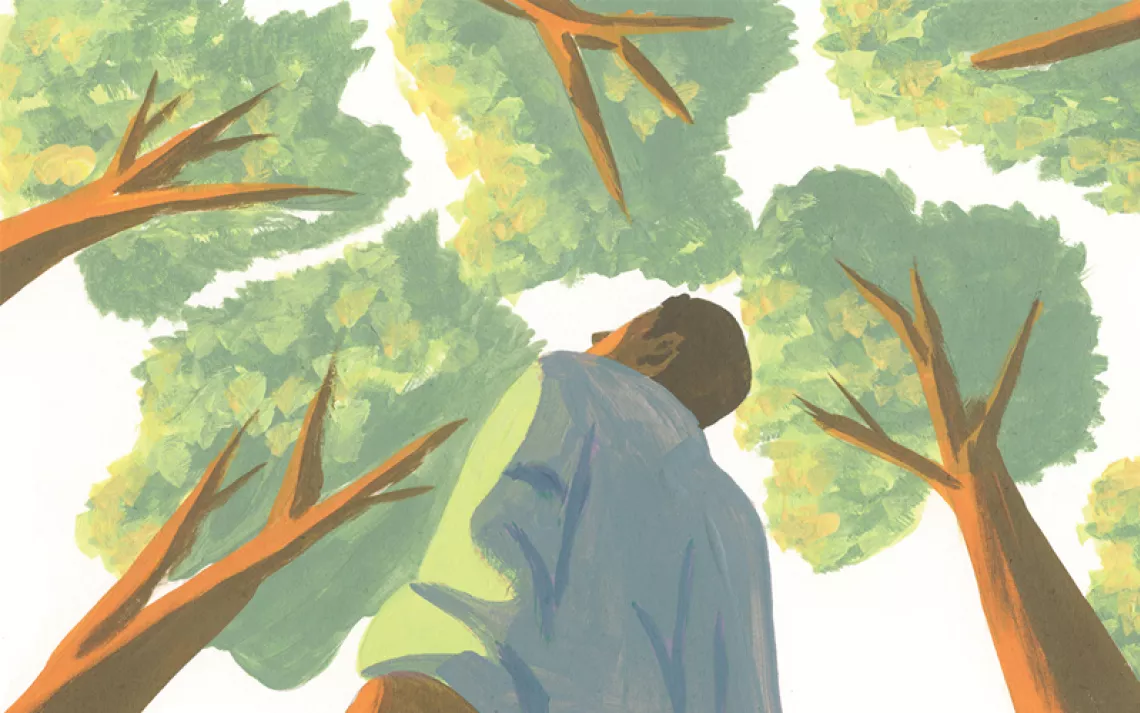Stargazing with the Terminator

At the lunar terminator, observers can see the moon’s topography more clearly.
June opens with Jupiter and the moon together in the west after sunset and Mercury to the lower right. But Mercury won’t hang around long as it drops lower and the sun stays up longer, moving toward the summer solstice on June 21 at 3:51 a.m. PDT. Jupiter will be setting about one hour after sunset by month’s end, and we’ll be left with Mars and Saturn as the planets to watch on warm summer nights.
Back in April, Mars was keeping close quarters with Spica, Virgo’s brightest star, and then in May it moved away before stalling out near Virgo’s second brightest star, Porrima. In June, Mars heads back toward bright Spica. As Mars returns to Spica it will also be moving toward Saturn. The two planets will get close in late August. On June 7 find reddish Mars above a waxing gibbous moon, and on June 8 the moon will reside near Spica. On June 9 and 10 the moon hovers in the vicinity of Saturn.
The Full Moon occurs on June 12 at 9:11 p.m. PDT and is sometimes called the Full Strawberry Moon. Full Moon is not a good time to turn a telescope on our nearest neighbor. When the moon is a crescent or gibbous shape, the shadowy edge where night and day falls across the satellite is known as the terminator. This is the best area of the moon to view with magnification, because the shadows highlighting the craters and mountains show the moon as three-dimensional, instead of when the whole surface is lit, which makes the moon appear flat. Every night as the moon changes phases it waxes and wanes, the terminator strikes a different part of the moon, so over the course of a month you can explore all areas of the moon in graphic relief.
The eight-day-old moon, or First Quarter Moon, is on June 5. A feature named Rupes Recta, also known as the Straight Wall, is a linear fault on the moon that is easiest to see eight days after New Moon when the sun hits it and illuminates one side while casting the other into deep shadow. Rupes Recta is found in Mare Nubium, a lava plain in the southern hemisphere of the moon.
June’s meteors include the Lyrids (June 16) and Bootids (June 27). Neither one of them are very reliable, but they give observers increased odds of catching a “shooting star” while stargazing.
Comet Jacques is close to the sun in June but may emerge in July as a decent viewing target for amateur astronomers. The comet will be entering Taurus on summer mornings. As we get closer to its swing around the sun we will have a better idea of how much comet Jacques is brightening.
 The Magazine of The Sierra Club
The Magazine of The Sierra Club







